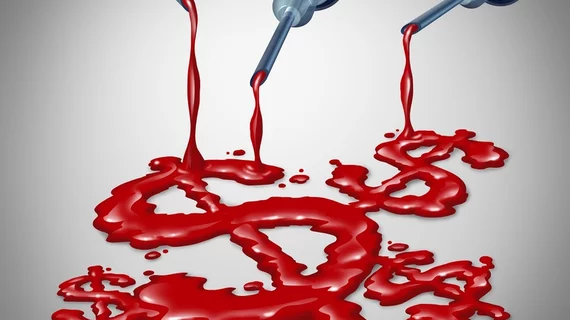‘Mild’ heart attacks, strokes sap $15K in productivity even when patients resume work
The actual cost of a heart attack or stroke to society is about double the direct medical costs when lost productivity for patients and caregivers is considered, according to a study published April 6 in the European Journal of Preventive Cardiology.
Kornelia Kotseva, MD, PhD, and colleagues studied 394 patients from seven European countries—196 of them had acute coronary syndrome (86% heart attack; 14% unstable angina) and 198 experienced strokes. All of the patients, who were 53 years old on average, returned to work after their events.
Still, the authors found ACS patients lost 59 workdays following their cardiovascular events (CVEs), while their caregivers lost 11 days on average. This translated to an average cost of €13,953, or about $15,714 in the U.S. Likewise, stroke patients lost an average of 56 workdays and their caregivers lost 12 for mean total cost of €13,773 ($15,511).
“Patients in our study returned to work, meaning their events were relatively mild,” Kotseva, with Imperial College London, said in a press release. “Some still had to change jobs or careers, or work less, and caregivers lost around 5% of work time. Not included in our study are those with more severe events who quit work altogether and presumably need even more help from family and friends.”
Because the researchers targeted cardiovascular patients of working age who were able to return to their jobs, they acknowledged it “provides a conservative estimate of productivity losses in the CVE population.” Indeed, 77% of stroke patients had a modified Rankin scale of 0 or 1 at discharge, representing relatively mild strokes.
Patients with more severe events could die or return to work later—or not at all—and cause an even larger productivity loss to society.
“This work is thus complementary to other research on productivity related costs and provides a piece of the puzzle that is currently under-investigated,” Kotseva et al. wrote in the journal.
According to the release, the direct medical costs in Europe to treat an ACS event range from €1,547 to €18,642, and direct costs for stroke range from €5,575 to €31,274. So, even for a relatively young and healthy population compared to the overall group that experiences cardiovascular events, “the actual burden on society is more than twice the amount previously reported,” Kotseva said.
Sixty-one percent of the lost productivity in the study was linked to the initial hospitalization and sick leave after discharge. About one-quarter of it was related to absences from work after the initial sick leave, including medical appointments and shorter sick leaves, while 9% to 16% was attributed to the patient being unable to work at full capacity.
“Lost productive time and indirect costs are substantial components of the economic burden imposed on society by CVEs,” Kotseva and co-authors wrote. “Continuous efforts on reducing risk of CVEs would not only lead to a healthier population, but would also help alleviate strains to healthcare budgets and economies of European countries.”

